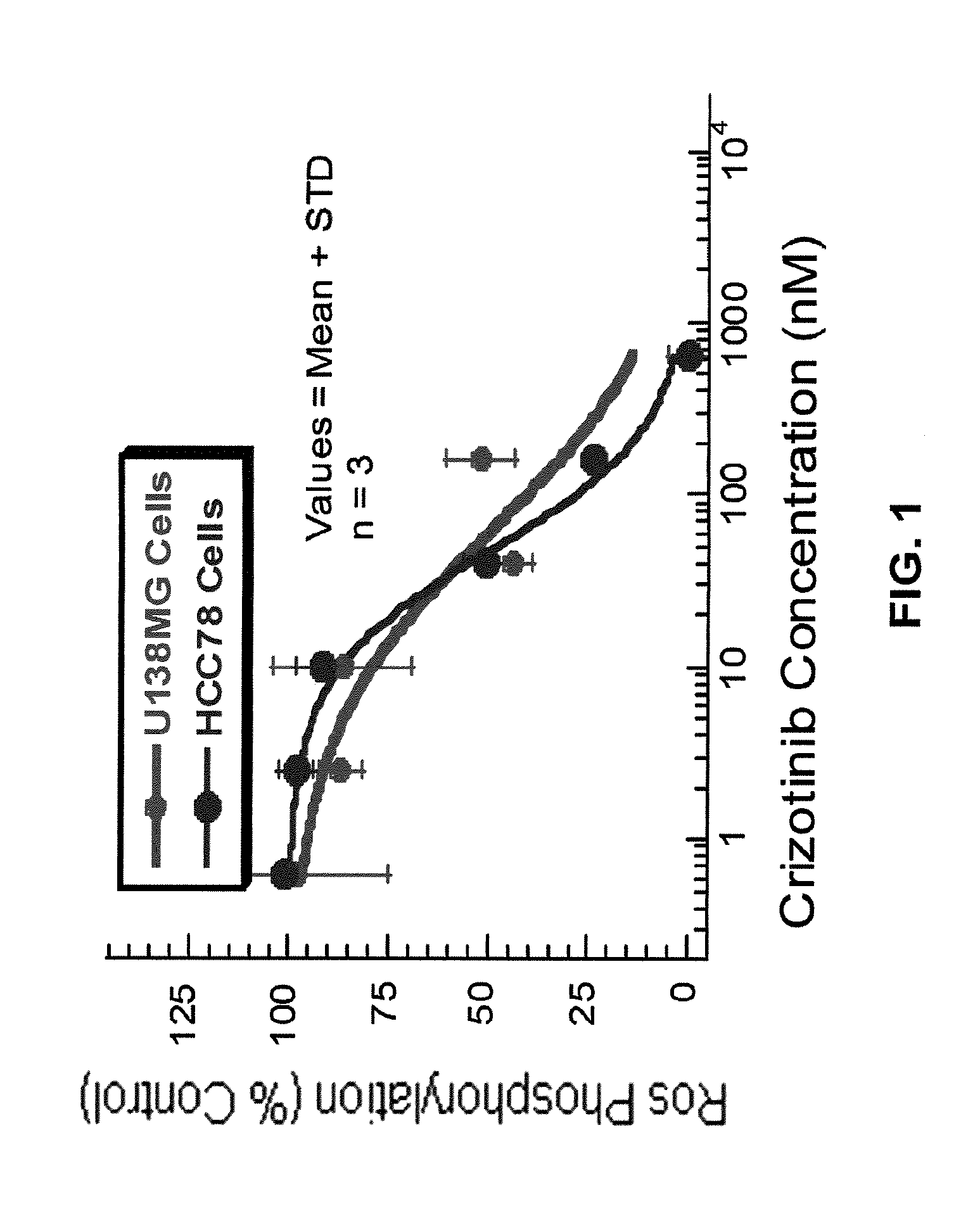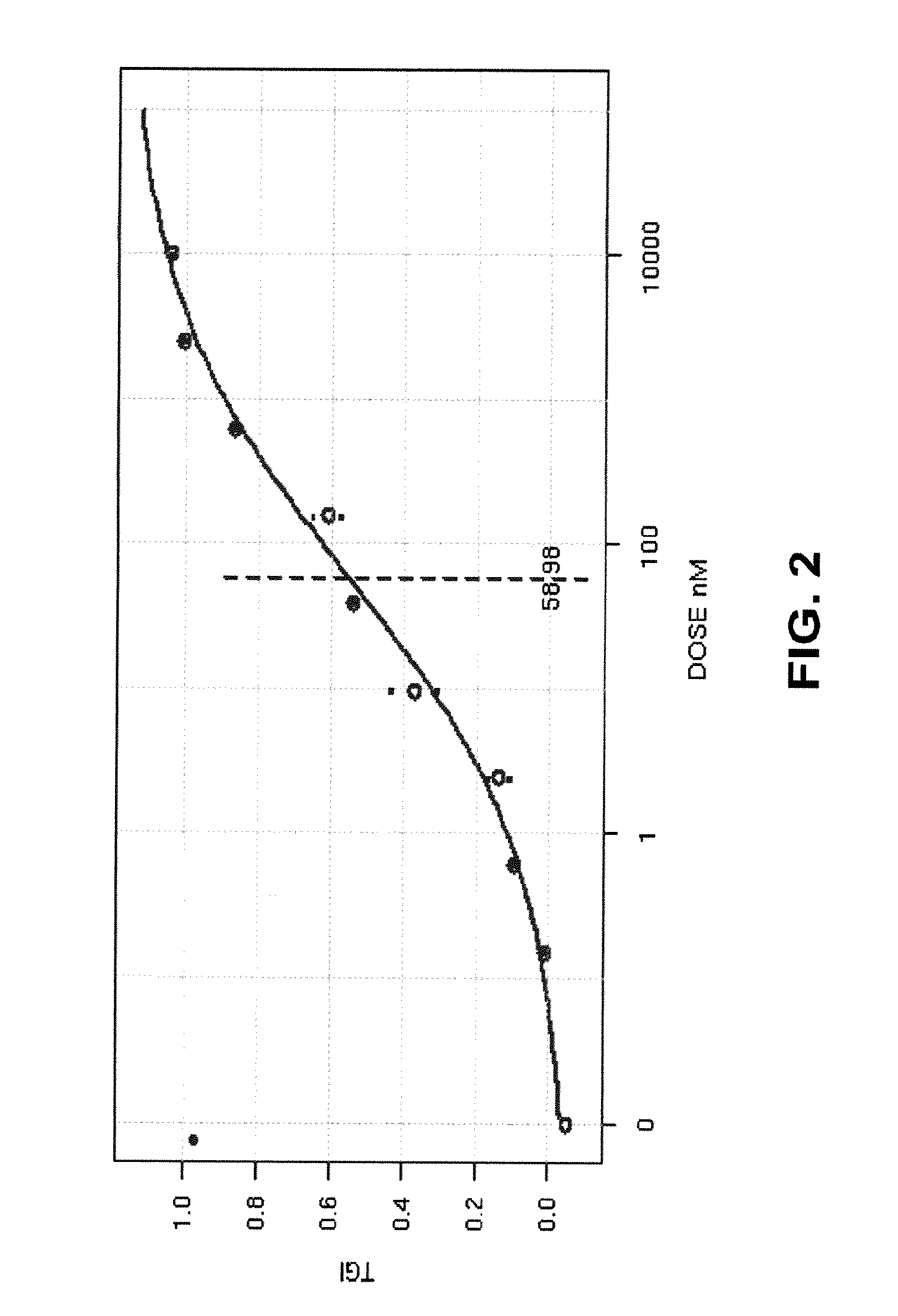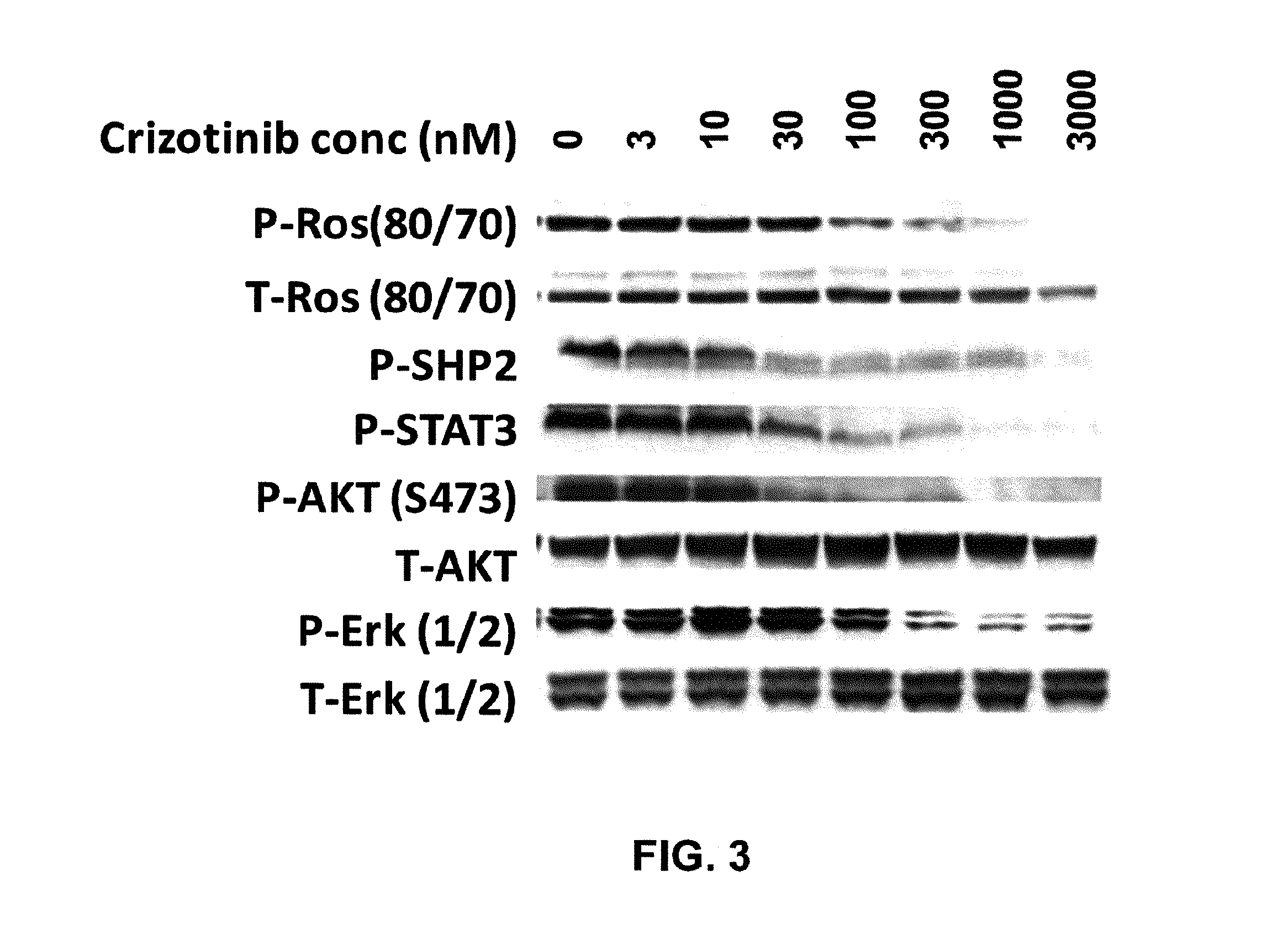Crizotinib for use in the treatment of cancer
a technology of crizotinib and cancer, which is applied in the direction of biocide, heterocyclic compound active ingredients, drug compositions, etc., can solve the problems of significant unmet need and significant unmet need
- Summary
- Abstract
- Description
- Claims
- Application Information
AI Technical Summary
Benefits of technology
Problems solved by technology
Method used
Image
Examples
example 1
Inhibition of ROS1 Kinase Activity in Biochemical Enzyme Assays by Crizotinib
[0234]Crizotinib was evaluated for its effect on ROS catalytic activity in both enzyme and cell-based assays. Crizotinib was demonstrated to be a potent ATP-competitive inhibitor of recombinant, human ROS1 kinase (catalytic domain) with a mean Ki value of 0.097 nM (n=4).
example 2
Kinase Activity of Crizotinib in Cell-Based Assays
[0235]Crizotinib dose-dependently inhibited ROS phosphorylation with a mean IC50 value of 41 nM (n=11) in the HCC78 cells that exhibit a 4p15, 6q22 chromosomal translocation event resulting in the expression of a constitutively active SLC34A2-ROS fusion protein (Rikova et al. (2007)) in these cells (Table 1, FIG. 1).
[0236]Crizotinib also inhibited ROS phosphorylation with a mean IC50 value of 49 nM (n=2) in the U138MG human glioblastoma cells harboring FIG-ROS fusion (Charest, et al. (2003)) (Table 1, FIG. 1).
[0237]In a panel of 3T3 cell lines that were engineered to express various ROS-fusion proteins, crizotinib inhibited ROS phosphorylation with IC50 values ranging from 3.4 nM to 36 nM in these cells (Table 1).
TABLE 1IC50 (nM)Mean +Cell-based ROS1 Kinase Phosphorylation AssaysSTDnEndogenous SLC34A2-ROS phosphorylation in HCC7841 ± 1411human NSCLC cellsEndogenous FIG-ROS phosphorylation in U138MG49 ± 182human glioma cellsEngineered...
example 3
Inhibition of ROS Mediated Signal Transduction and Induction of Cell Apoptosis in the HCC78 Human NSCLC Cells In Vitro
[0238]Crizotinib was evaluated for its ability to inhibit SLC34A2-ROS dependent signaling pathways in the HCC78 cells.
[0239]As illustrated in the immunoblot in FIG. 3, crizotinib dose dependently inhibited ROS phosphorylation (activation loop), as well as the downstream adaptor or signaling molecules including SHP2, STAT3, AKT and ERK1 / 2 following 3 hours of drug treatment in the HCC78 cells in vitro. These data demonstrated a correlation between key signaling pathways and efficacious doses of crizotinib.
[0240]Crizotinib was evaluated for its dose-dependent modulation of the caspase-3 marker of apoptosis utilizing Western Blot analysis. Following 3-hour of drug treatment, a significant dose-dependent induction of activated caspase-3 levels was observed in the HCC78 NSCL cells (FIG. 4) indicating that increased apoptosis also correlated with efficacious dose levels.
PUM
 Login to View More
Login to View More Abstract
Description
Claims
Application Information
 Login to View More
Login to View More - R&D
- Intellectual Property
- Life Sciences
- Materials
- Tech Scout
- Unparalleled Data Quality
- Higher Quality Content
- 60% Fewer Hallucinations
Browse by: Latest US Patents, China's latest patents, Technical Efficacy Thesaurus, Application Domain, Technology Topic, Popular Technical Reports.
© 2025 PatSnap. All rights reserved.Legal|Privacy policy|Modern Slavery Act Transparency Statement|Sitemap|About US| Contact US: help@patsnap.com



